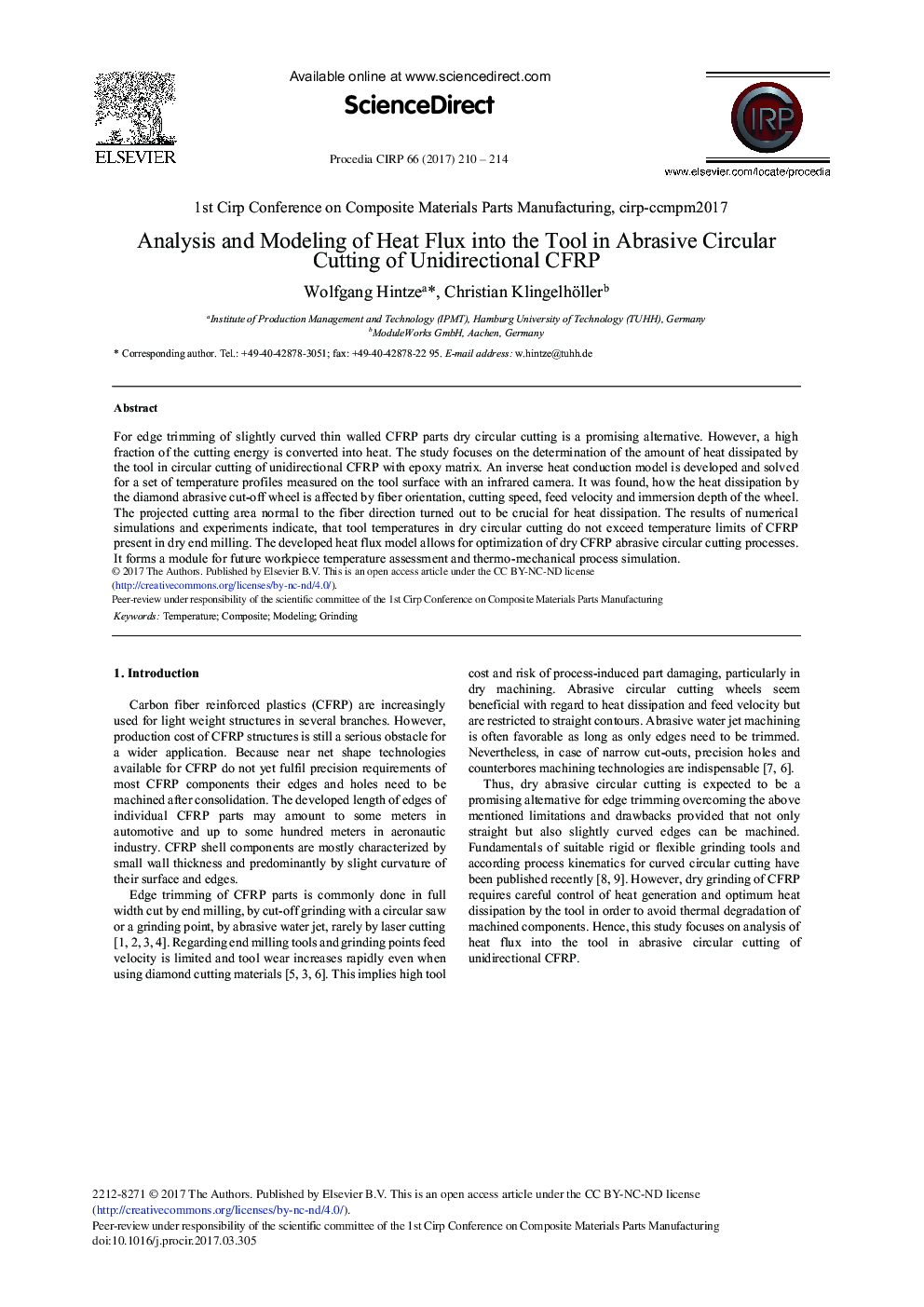| Article ID | Journal | Published Year | Pages | File Type |
|---|---|---|---|---|
| 5469604 | Procedia CIRP | 2017 | 5 Pages |
Abstract
For edge trimming of slightly curved thin walled CFRP parts dry circular cutting is a promising alternative. However, a high fraction of the cutting energy is converted into heat. The study focuses on the determination of the amount of heat dissipated by the tool in circular cutting of unidirectional CFRP with epoxy matrix. An inverse heat conduction model is developed and solved for a set of temperature profiles measured on the tool surface with an infrared camera. It was found, how the heat dissipation by the diamond abrasive cut-off wheel is affected by fiber orientation, cutting speed, feed velocity and immersion depth of the wheel. The projected cutting area normal to the fiber direction turned out to be crucial for heat dissipation. The results of numerical simulations and experiments indicate, that tool temperatures in dry circular cutting do not exceed temperature limits of CFRP present in dry end milling. The developed heat flux model allows for optimization of dry CFRP abrasive circular cutting processes. It forms a module for future workpiece temperature assessment and thermo-mechanical process simulation.
Keywords
Related Topics
Physical Sciences and Engineering
Engineering
Industrial and Manufacturing Engineering
Authors
Wolfgang Hintze, Christian Klingelhöller,
